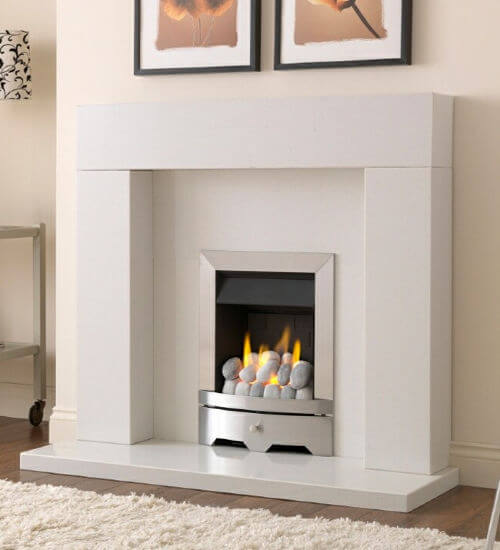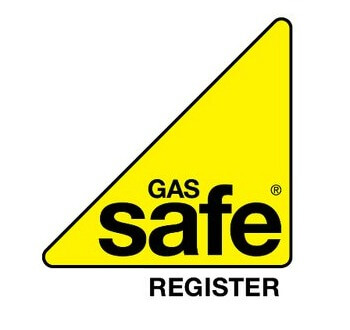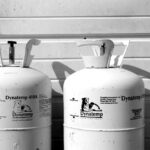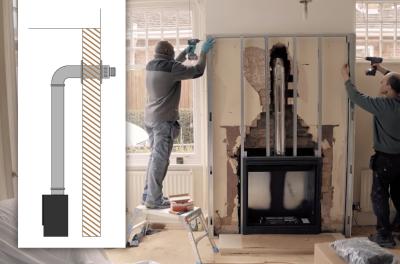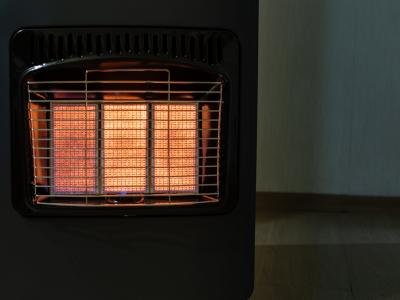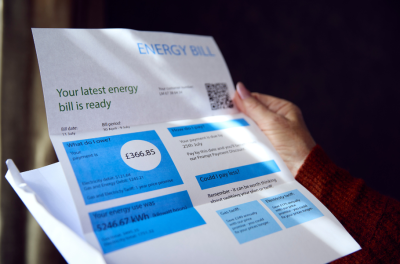We use cookies to improve your experience and our business. See our privacy/cookie policy or continue browsing to accept our use of cookies. View our cookie policy.
LPG Gas Fireplaces: What You Need to Know
We don’t think it’s any exaggeration to say that anyone can enjoy the benefits of a gas fire - even those who don’t have a fixed gas supply.
Gas fires are a lot more diverse than you might think. While electric fires are often the first choice for those struggling to meet the requirements of a gas fire, exploring all the options available to you might help widen your choice.
Here at Direct Fireplaces, we like to make sure we are providing the best range to suit all homes. Included in this is a choice of LPG compatible fireplaces.
These are ideal if you live somewhere more off-the-beaten-track and don’t have access to a mains gas supply. This is a surprisingly common concern, and can leave residents relying on expensive electric heaters or, a much dirtier option, oil-run heating systems.
So, what exactly are the benefits of using an LPG fire if you are in this situation? Here are just a few advantages to consider:
- Gas is one of the cheapest fuels. Electricity can be costly when used as your main heating source. Oil can be cheaper, though gas can also be used to fuel other appliances too, like cooking hobs
- Gas is also clean and efficient.While oil is a common choice for those living off-grid, it is highly polluting. Wood burning is another option, though you need to ensure you burn it correctly to limit air pollution - plus, it isn’t as convenient as gas.
- Gas is easy to source. As we said above, wood burning is a good alternative, but you need to ensure you have a stable, good quality supply and somewhere dry to keep it.
Want to know more about installing an LPG gas fire in your home? Read our guide to find out everything you need to know...
What Type of Gas Does a Gas Fireplace Use Normally?
Most gas fireplaces are connected to a mains gas supply, which uses natural gas. If you don’t have a connection to the main gas supply, you can contact the National Grid to see if your home can be piped in. The issue with this is that it could be very costly, depending on how far away your home is from the nearest gas line.
An alternative is to use LPG gas, otherwise known as propane gas. This is available in bottles or tanks, and can be used by some fireplaces as a fuel source, instead.
Can a Gas Fireplace Run on Propane?
Using propane gas for a fireplace is very possible - however, you do need to make sure you have the correct fireplace to do so. Not all fires are compatible with LPG gas, so watch out that you don’t buy one designed for use with a main or natural gas supply. This is because these gasses burn differently to one another, so they each require a different burner system. If you use the wrong kind of gas, you could be creating a severe safety hazard.
At Direct Fireplaces, you can filter all of our gas fireplaces by ‘Gas Option’, so you can easily find one that suits your needs.
How Does a Propane Gas Fireplace Work and How Do I Fit One?
A propane, or LPG, fireplace works slightly different to a natural gas fireplace.
First of all, you need to hook your fireplace up to a propane tank, rather than connect it to a main gas line. To do this, you will need to buy an LPG gas tank. These are usually placed outside the home, close to the wall where the appliance you would like to connect to is. If you want a large tank to fuel multiple appliances, these can be placed in the ground.
Next, you will need to contact a Gas Safe engineer. They will make sure that the gas line to your home, and any connections, are all done safely.
Unlike with most modern natural gas fireplaces, many propane gas fireplaces work with a pilot light. To get your fire burning for the first time, you will need to ignite the pilot light, which can be left on even when you are not using your fire.
To do this, you will need to:
- Open the fireplace’s gas shut-off valve
- Turn the control knob to the ‘pilot’ setting and hold it in
- Still holding the pilot knob in, press the ignite button
- Once it has caught a flame, keep holding the control knob in for another 30 seconds or so
- The pilot light is ready when it turns darker in colour
Once lit, a propane gas fire works similar to a natural gas fire - you can control the heat by simply adjusting the control knob.
As for your chimney, the requirements for LPG gas fires don’t differ from ‘normal’ gas fires - you can choose from full depth gas fires, slimline gas fires, balanced flue gas fires and flueless gas fires.
Find out more about which one is right for you here: Choosing the Right Fire for Your Chimney & Flue Type
How Big of a Propane Tank Do I Need for a Fireplace?
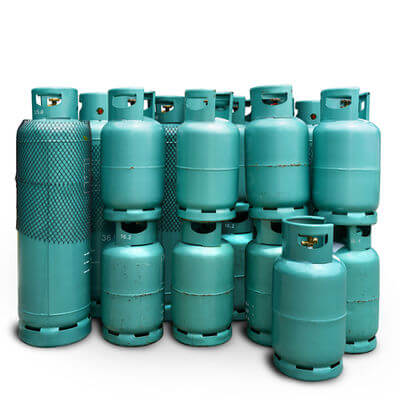
How much propane an LPG gas fire uses will depend on a few things, such as:
- The efficiency of the fire
- How cold it is outside
- The BTU required by your room
- Whether you are using your gas supply for other appliances
- How often you use your fire
Usually for propane, there is about 91,500 BTU in a gallon.
So, if you had a 30,000 BTU fireplace, it would burn 1 gallon in about 3 hours.
For the average house, a propane tank that holds from 100lbs (approx 23.6 gallons) to 420lbs (approx 96 gallons) should suffice, depending on how often you would prefer to fill it up. If you want to use your fireplace often and have a larger room, you might want to err on the larger size.
Don’t forget, you will usually have to pay a maintenance and delivery charge on the gas refills you get at your home, so factor this into your budget.
Shop Online at Direct Fireplaces Today!
We stock one of the UK’s best ranges of gas fireplaces at guaranteed low prices - with free delivery available.
Shop all our fireplaces & surrounds for more.
Don’t forget to check the Direct Fireplaces Blog for regular tips and buying guides…
The Best Coal Effect Electric & Gas Fires | Which Gas Fires Are the Most Efficient | Should You Convert Your Open Fire Into a Gas Fire
[related_products is_auto_added="1"]direct fireplaces
Latest posts by direct fireplaces (see all)
- Which Electric Fireplace Gives the Most Heat? - February 5, 2021
- Retro Fires and Retro Stoves for the Home - January 22, 2021
- Do I Need a Fireplace in My New Home? - January 20, 2021


